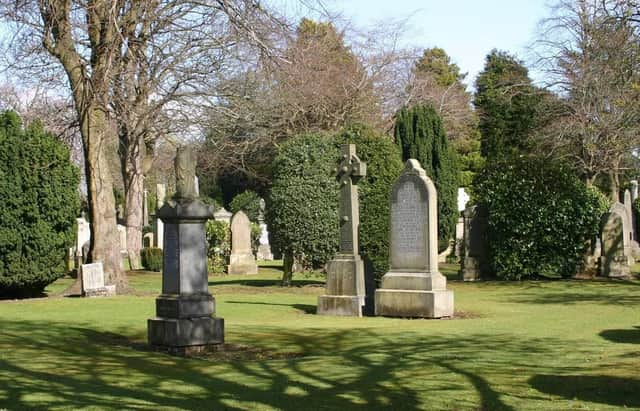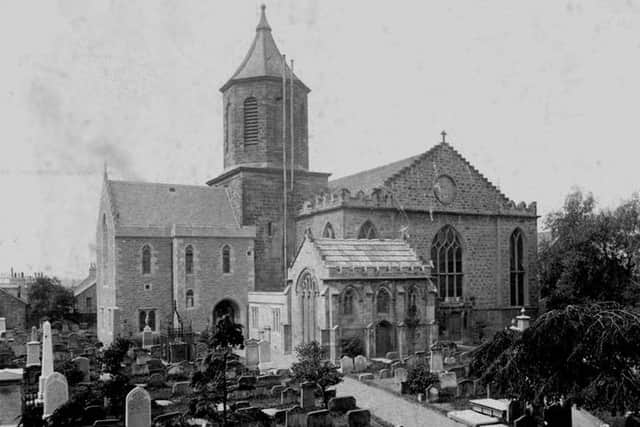Looking Back with Ian Scott - History around every corner in Camelon cemetery


Beautifully laid out and maintained it has served the town for over 150 years and is full of interest especially for those with an interest in our history.
Before it opened in 1870 the official place of burial was the Parish Kirkyard in the High Street which was available to all residents whether they attended church or not.
Advertisement
Hide AdAdvertisement
Hide AdElsewhere there were church burial grounds in the Tanners Brae for the West Church, Silver Row for members of the Erskine UP congregation and the Cow Wynd for the ‘Tattie Kirk’.


These were limited to their own members which meant that the Parish Church was overwhelmed with demand for burial space at a time when the population was rising fast.
It was already in a poor state as this report from 1859 makes clear: “A filthy and offensive ditch separates the burial ground from the houses and the moisture which exudes from the crowded and elevated burial ground is most unwholesome.”
Fortunately help was at hand in the person of John Beeby, the clerk to the Parochial Board, who persuaded the reluctant members that they should find the money to provide a municipal cemetery.
There was a huge debate as to where it would be located.
Advertisement
Hide AdAdvertisement
Hide AdLand to the south of Hodge Street was a favourite though some wanted to put it north of Meeks Road. In the end the Board opted for Dorrator.
In 1868, 11 acres of land were acquired from the Earl of Zetland and the next year work began on laying out the ground following a plan drawn up by ‘Mr Clark, late of the Glasgow Botanic Gardens’.
William Millar of the Port Glasgow Cemetery was appointed Superintendent at a salary of £80 plus a free house and the cemetery opened in August 1870.
The earliest sections lie close to the entrance but there have been many extensions over the decades.
Advertisement
Hide AdAdvertisement
Hide AdFrom the outset it was greatly admired for the beauty of the trees, shrubs and flower beds but the fact that 1500 lairs were set aside for paupers reminds us that there was a darker side to the burgh’s new prosperity.
A stroll through that oldest section is an education. Not only fine stones and inscriptions but the occasional surprise young deer strolling among the graves no doubt on its way to scoff yet another floral tribute!
Here are handsome memorials to powerful families – coal owners, ironmasters and the like – the Aitkens, Cockburns, Nimmos and Russels, the poignant tomb of John Wilson of South Bantaskine with relief medallions of himself and his only son who died young, the broken column that marks the last resting place of the town’s greatest poet Robert Buchanan, and the memorial to James Love the ‘patron saint’ of local historians.
Less decorative but just as significant the stones set almost side by side reminding us of Patrick Shiels and David Porteous who died in the 1923 Redding Pit Disaster.
On a fine day there is no better place to find the peace of the ages and for a walk down memory lane – you will find history round every corner.
Comment Guidelines
National World encourages reader discussion on our stories. User feedback, insights and back-and-forth exchanges add a rich layer of context to reporting. Please review our Community Guidelines before commenting.